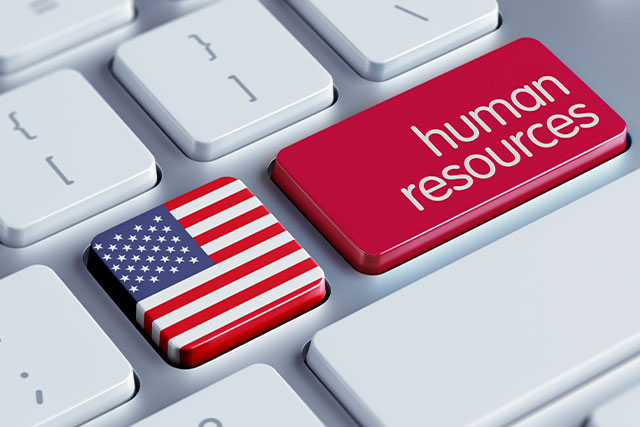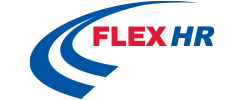Flex HR prides itself on helping clients from other countries outside of the U.S. in establishing a U.S. Workforce. Flex HR has worked with companies based in Asia, Central America, and Europe to establish their U.S.-based workforces. There are complexities to consider when establishing a U.S. workforce. Here are some questions that a company trying to enter the U.S. market would want to consider for HR and payroll:
- Who will be the point person in the U.S. to sign off on key documents that are HR and payroll related?
- Who should be the first employee(s) to come to the U.S.?
- What are fair wages to pay employees in the U.S.?
- What are the benefits that are expected by employees in the U.S.?
- How will we establish a banking relationship in the U.S. for our payroll?
- What should be the first items we establish upon entering the U.S. from an HR and payroll standpoint?
Before you start recruiting for your U.S. presence, you will want to establish the items needed to set up a payroll in the U.S.
Depending on the state where you are located it is law to pay employees at a minimum of at least twice per month or once per month. If you establish an employee without the means to pay them for months on end, you will be going against U.S. labor law. In order to establish a U.S.-based payroll, there are four items that you will need:
- A U.S. bank account
- A U.S. address
- A business entity established within a U.S. state
- A U.S. federal employer identification number


First, you will want to establish a U.S. bank account in order to pay your employees in the U.S.
One of the easiest ways to open a U.S. bank account is to use a U.S. branch of a bank that your company already uses. You can also use connections through the company to establish a U.S. bank account.
Next, you will want to establish a U.S. address and an entity in a state. You can set up in a variety of structures within a state and file an articles of organization.
This is fairly inexpensive, however you will want to consult an accountant when making the decision on the structure of your organization in the U.S., such as an LLC, which is a limited liability company. The process is usually very quick to establish the entity within the state. In terms of a U.S. address and selecting the state where you will want to locate your work in, you will want to be aware that the U.S. states function like various countries, in terms of human resources and payroll laws. The laws can vary widely between states. You will want to have a trusted partner for HR and payroll advising you on which state to choose. You will also want the person in the U.S. located in the state where you are filing.
Finally, you will need a federal employer identification number with the Internal Revenue Service in the U.S.
The process is quick and free. You can go to the IRS website in order to file. You will want the person applying online to have a valid taxpayer identification number like a U.S. social security number.
Once you have an address in the U.S., a registration in a state, a U.S. bank, and and a U.S. employer ID number, you will be set for running payroll here.
A typical payroll set-up takes approximately six to eight weeks. Once you have all four items for the payroll platform, they will spend the next six to eight weeks setting up your customized company and employees within the platform so the employees can be paid with the appropriate taxes and any benefits taken as deductions through the payroll. Before the first payroll, you will most likely be required to wire the funds to the payroll company. This is required because you don’t have an established presence for paying people in the U.S. Once the wire funding has been done for the first payroll, you will move to ACH funding. So for the next 90 days, the payroll platform will most likely require an ACH draw at least six days before the payroll runs, in order to ensure the payments are processed.
Human Resources & Ancillary Considerations
In terms of human resources, there are other important items to consider. You will want to set up the following before hiring an employee in the U.S.:
- An employee handbook that covers the policies for the employer and employee.
- An offer letter that articulates any contingencies for work.
- A confidentiality agreement for the employee to sign.
- A benefits overview for employees.
- A strategy on background checks and what type of background check you will do as an employer.
- HR-related paperwork like the following:
- W-4 for federal taxes
- State related tax and unemployment insurance documents
- I-9 form
- Direct deposit form
- Emergency contact form
Your company will also want to consider ancillary items for work, including the following:
- A company laptop, to be assigned to the employee, if this is a remote-first work environment.
- A technology set-up at an office, if needed.
- A training schedule for the hiring manager to give to the employee as an orientation.
Finally, your company may want to establish benefits for your employees.
Benefits can be complex and incorporate a lot of items including medical, dental, and vision insurance. Benefits can also include short term disability, long term disability, and other ancillary benefits. Depending on the state where you are based, you are required to establish workers compensation insurance for a minimum of just one employee who is receiving a W-2 from your company. The workers compensation insurance protects you as the employer and the employee in case they are injured on the job. In addition, you might want to establish a retirement plan for your employees, which is commonly referred to as a 401K. There are other benefits that you might want to provide including company holidays, paid time off, and reimbursements of work-related expenses.
It is important to consider working with an HR and payroll partner who will help you analyze the complexities of payroll, human resources, and benefits for your U.S.-based workforce.
